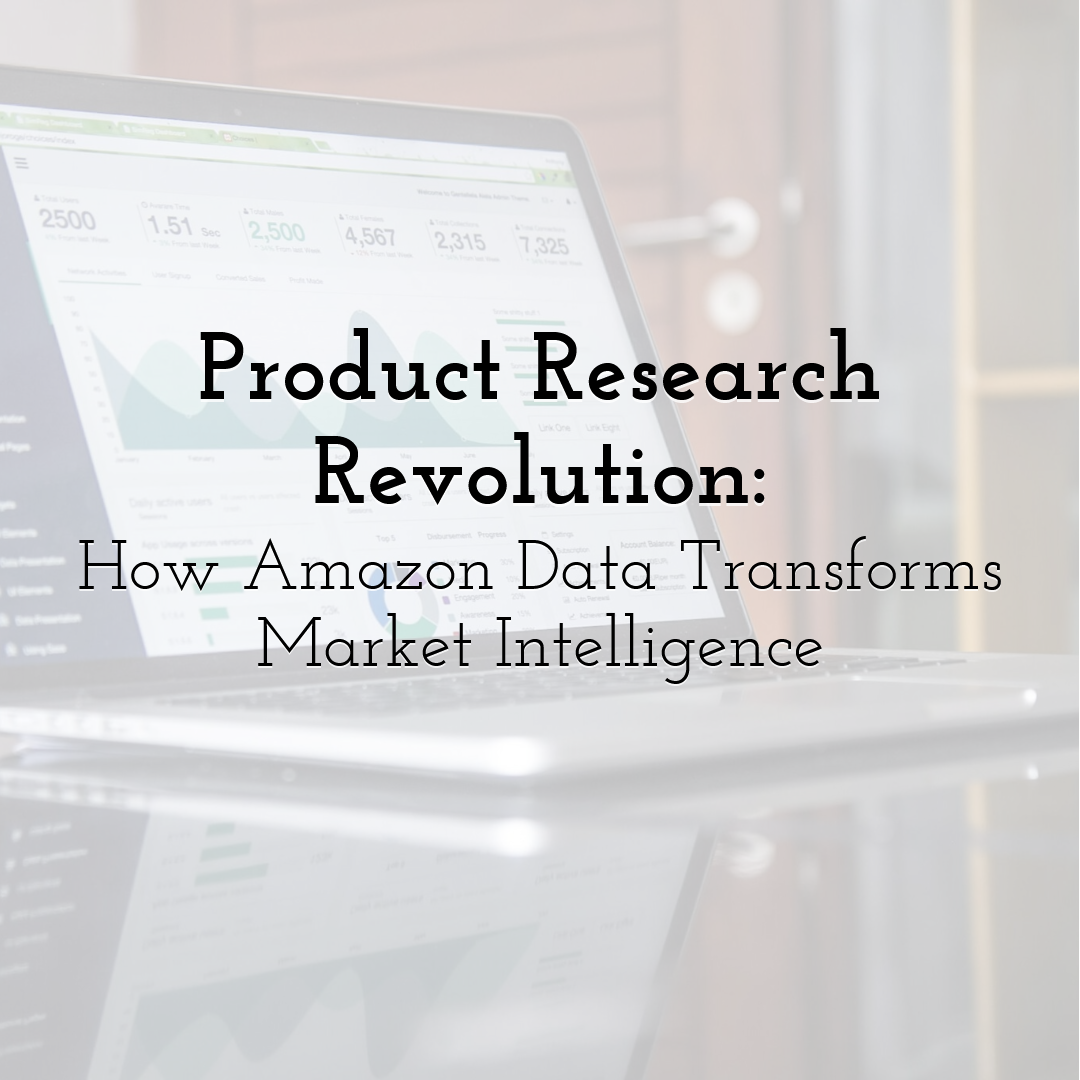Product Research Revolution: How Amazon Data Transforms Market Intelligence

You’re standing in the shower. Boom — a product idea hits. It’s smart. It solves a problem. You picture the logo. The packaging. Maybe even your TED Talk. But before you dive headfirst into prototyping, branding, and sending money to manufacturers… let’s pause.
Because no matter how clever your concept is, if the market doesn’t want it — or already has 400 versions of it — you're in trouble. Most product flops have one thing in common: they were launched on a hunch, not data. That’s the difference between being bold and being blindly optimistic.
Find the Gaps They Missed

Market saturation isn’t the enemy. Unoriginal thinking is. Even in packed markets, there are gaps hiding in plain sight — untapped niches, overlooked features, unmet needs. You just need to look closer. Trends change. Customers shift. Most competitors don’t.
Identify Weak Listings in High-Demand Categories
A category full of clunky product photos, vague titles, and one-sentence descriptions? That’s a weak spot. If demand is there, you can break through with a polished offer.
Spot Long-Tail Keywords with Low Competition
Not every customer searches for “wireless earbuds.” Some look for “noise-cancelling earbuds for sleeping” — and those are the ones who are ready to buy now. Amazon search data shows where the overlooked intent lives.
Dig Into the “Almost-There” Reviews
Products with 3.5 stars and 1,000 reviews are screaming for improvement. If multiple people are complaining about the same issue — and no one’s fixed it — that’s your blueprint
Before You Build It, See If It Sells

Here’s the truth: if you're not studying what’s already selling (and not selling), you’re guessing. And in today’s hyper-competitive landscape, guessing is expensive. Amazon is your secret weapon. It’s not just an e-commerce giant — it’s a real-time, 24/7 market research machine that shows exactly how customers behave, what they buy, what they complain about, and what they’re ignoring.
With a tool like an Amazon scraper, you can extract valuable data — from product listings to reviews to pricing trends — and start making decisions based on facts, not feelings.
Here’s what you’ll uncover with the right scraping strategy:
- • Demand signals – What products people are actively buying, searching, and reviewing.
- • Pricing patterns – How prices vary across competitors, categories, and customer expectations.
- • Category saturation – How crowded (or empty) your space is.
- • Sentiment feedback – What customers love, hate, or wish existed.
- • Positioning cues – How products are presented, titled, and differentiated.
Validate Like a Scientist, Not a Gambler

Ideas are exciting. But excitement doesn’t pay the bills. Market validation does.
1. Use Demand Data as Your Reality Check
Check Amazon’s search results for your product idea. Are there listings with thousands of reviews? Or are the top results weirdly unrelated? That tells you something. Scraped review counts, bestseller ranks, and keyword volume paint a clear picture of actual interest.
2. Analyze Review Content for Proof of Need
Five-star reviews often shout “finally found what I was looking for!” Three-star reviews? That’s where the gold is — customers mention what’s missing, what could be better, or what they settled for. That’s your design brief.
3. Avoid the “Invention Trap”
If no one’s selling anything like your idea, it might be a unicorn. Or it might be a red flag. Scrape the surrounding categories. Look for adjacent products. Make sure your solution isn’t for a problem that doesn’t exist.
Price With Confidence, Not Panic

Pricing is strategy, psychology, and math — all rolled into one. And most people just wing it. Amazon tells you what real customers are willing to pay. Better yet, it tells you what they won’t.
Compare Price Ranges Across Direct Competitors
Scrape your niche and look at where most products fall. Then spot outliers. Who’s charging more? Why? Are they offering bundles, warranties, or just better marketing? Also look for what isn’t offered in each price tier.
Map Reviews to Price Points
Five stars at $14.99? Nice. Two stars at $39.99? Yikes. If you track pricing against customer satisfaction, patterns emerge — and pricing mistakes become obvious. But don’t stop there. Dig into what reviewers say about value. Are they thrilled by a “surprisingly good deal” or frustrated by a “not worth the price” experience? This sentiment analysis helps you fine-tune both your pricing and your product promise.
Build Smarter Launch Plans (Because You Have the Data Now)

You’ve got demand signals. You’ve found the gaps. You’ve cracked the pricing code. Now it’s time to actually launch — but smarter.
Here’s how Amazon data can shape your GTM strategy:
- • Messaging: Use the exact words your audience uses in reviews and search queries.
- • Positioning: Emphasize what competitors overlook — even if it’s something as small as eco-friendly packaging or quieter motors.
- • Imagery: If the top sellers have blurry photos or no lifestyle shots, that’s your edge.
- • Timing: Launch with trends. Not against them. Amazon trends reveal when interest peaks and dips.
- • Feature Focus: What you thought was a “nice-to-have” might be the deciding factor for buyers.
No Big Budgets. No Fancy Tools. Just Smarter Decisions
Scraping Amazon used to be something only massive teams with developers could do. Not anymore. With modern tools, even solo founders or lean product teams can collect powerful insights — fast, clean, and without writing a single line of code.
Anyone can have a product idea. And let’s be honest — most people do. What separates the success stories from the “we almost made it” tales isn’t funding or branding. It’s research. Real, grounded, behavioral insight. And Amazon is offering it up — every day, for free — to anyone smart enough to look. So before you build it… scrape it.
Until next time, Be creative! - Pix'sTory


